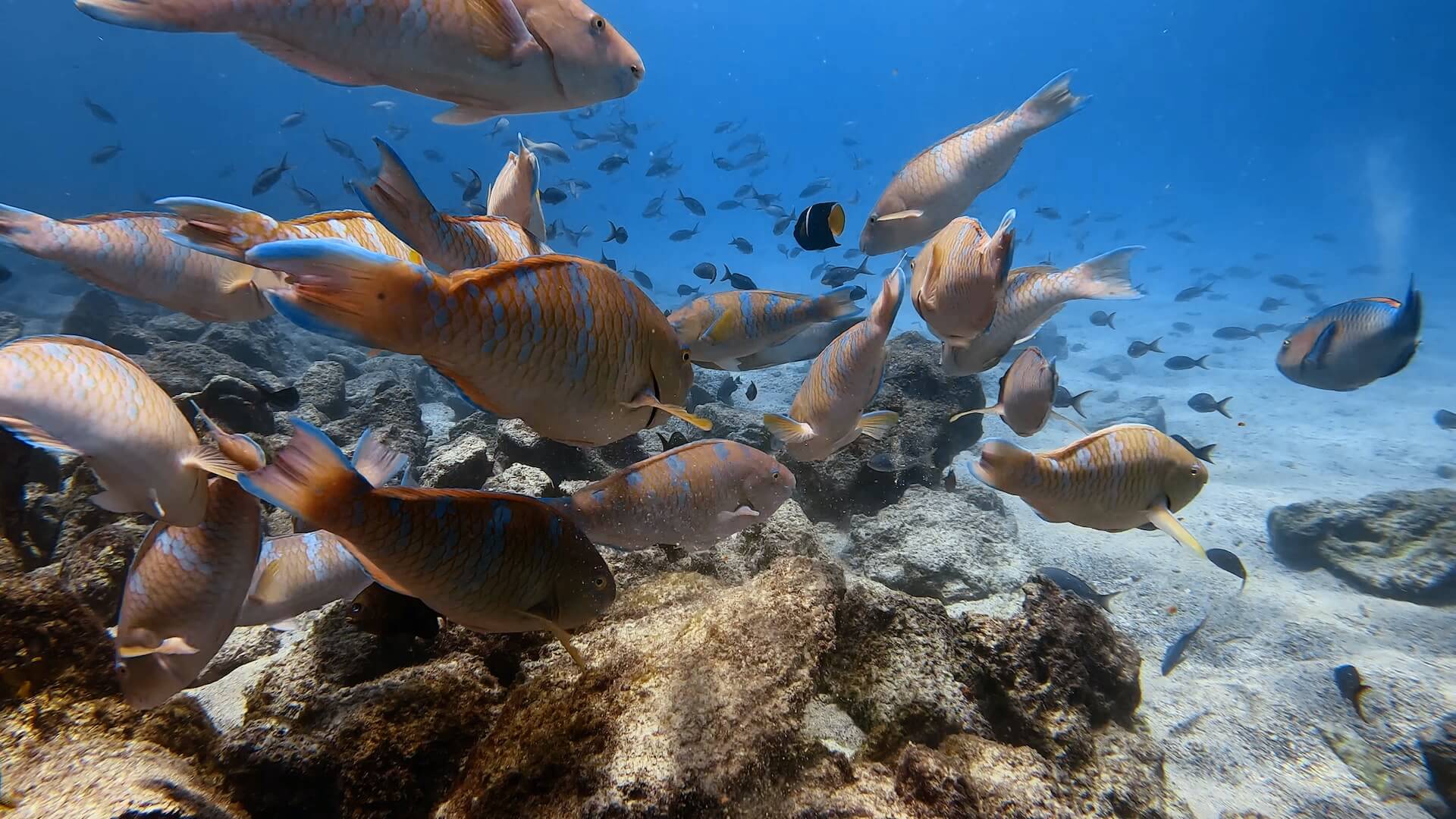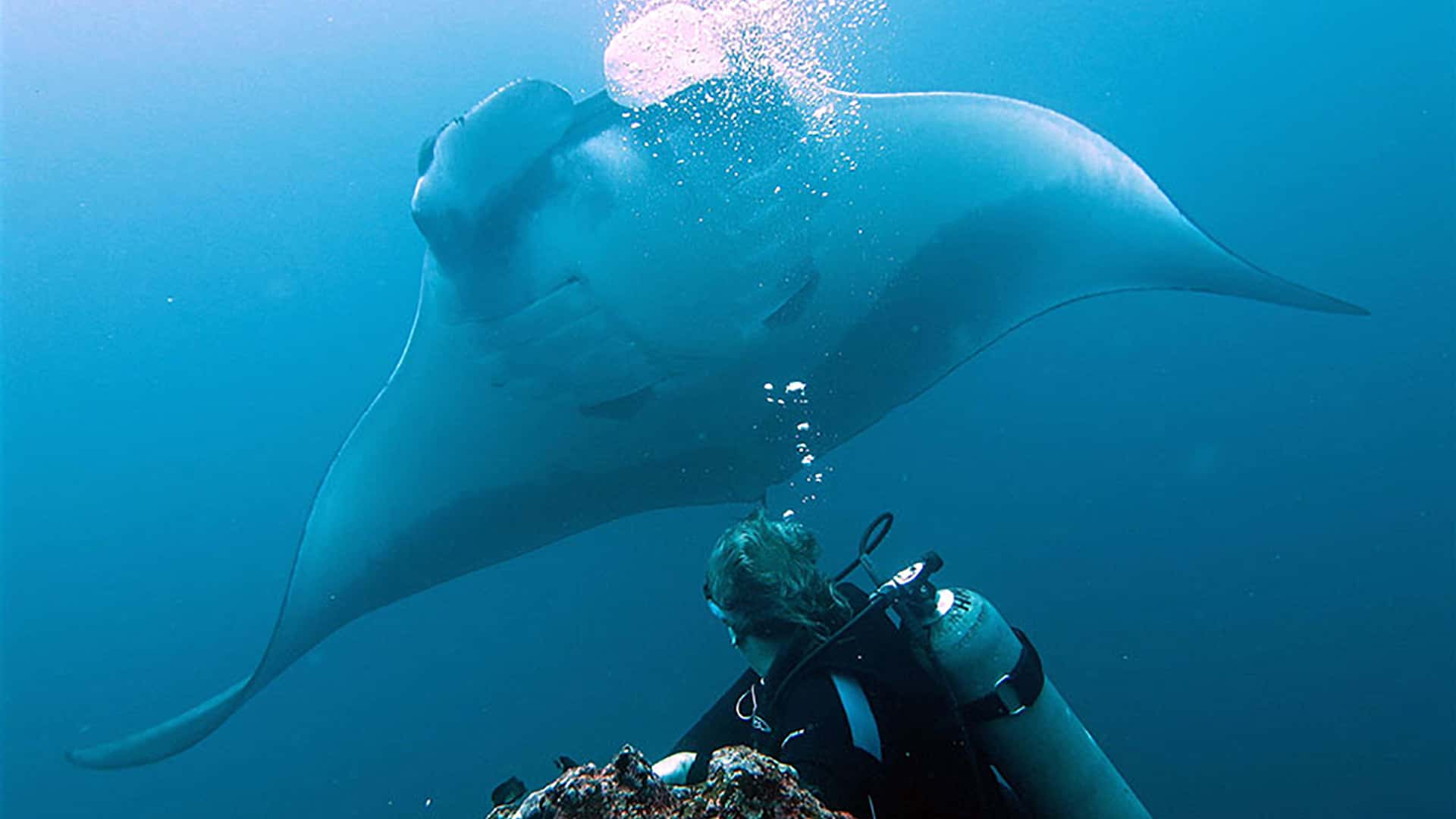At Academy Bay Diving, we have a true passion for promoting and preserving the Galapagos Islands. Our Galapagos diving trips are a gateway to exploring this remarkable environment in a safe and sustainable way. Led by our certified guides, our excursions are truly immersive, educational, and unforgettable experiences.
To help you get to know this special place better, we have used this blog to provide a brief introduction to the Galapagos National Park. Scroll down to find out more! And if you have any questions about our dive tours in the Galapagos Islands, please get in touch for the answers you need.

What is the Galapagos National Park?
Established in 1959, the Galapagos National Park is the oldest national park in Ecuador. About 97% of the entire area of the Galapagos Islands is part of the park system and remains uninhabited. The other 3% of the islands are the inhabited areas of Santa Cruz Island, San Cristobal Island, Isabela Island and Floreana Island. In 1967, the first park service was created, but it took about 4 years for the Galapagos National Park to assign its first Superintendent and first set of park rangers as part of the national park system.
Today the park has a complex management system and hundreds of Park Rangers. In 1979, the Galapagos National Park was declared a UNESCO World Heritage Site. This meant that the Park’s management and staff were responsible for performing permanent conservation efforts and guarding the islands according to UNESCO’s standards and regulations. However, in 2007, as a result of the fast-growing human development and poorly controlled immigration, tourism, and trade, UNESCO added the Galapagos to its List of World Heritage Sites in Danger.
Since 2007, strict measures have been put in place by the Galapagos National Park to control tourism, immigration, and the development of existing communities in Galapagos. Since its existence, the Galapagos National Park has developed a series of rules and regulations to protect the islands and minimize the impact of tourists. All tourists who visit the islands on a cruise, or who take daily tours out to the islands, must be accompanied by a Galapagos National Park certified guide on every visit
In addition, the Galapagos National Park collects an entrance fee of $100 per person from all those who wish to visit the park and the Galapagos Marine Reserve either by staying at a hotel in the islands or by taking a Galapagos cruise.

Visiting Galapagos National Park: Rules and Regulations
The most important rules and regulations of the Galapagos National Park for visitors are the following:
- Always follow the marked trail and never leave it.
- Do not touch the animals.
- Do not take souvenirs from the islands.
- Do not get too close to animals.
- Do not litter.
- Do not smoke on the islands.
- Do not take food to the islands.
- Clean your shoes’ soles before disembarking on the islands. You may have carried some seeds endemic to one island and would not want to introduce them to another.
- Fishing is prohibited in the Galapagos National Park’s marine reserve.
- If you see anyone violating these rules, notify your guide immediately.
- Anytime you disembark your ship and set foot in the Galapagos National Park, your naturalist guide is the maximum authority.
- Always stay close to your guide. This is the best way to avoid accidents.
- Do as your guide instructs at all times. Your guide knows the terrain and wildlife like the palm of his/her hand.
- If you have anything on your mind, do not hesitate to ask your guide. They are very knowledgeable and friendly.
- Always follow the marked trail. Do not leave the trail at any time, otherwise, you might stumble upon wildlife and harm yourself, the animals, and plants. Learn more about the land creatures of the Galapagos Islands.
- Animals in the Galapagos are completely unafraid of humans. They will not get out of your way, so mind your step! Many animals such as boobies, lizards, iguanas and sea turtles will nest in the marked trail and cross your path frequently.
- Some species like the Sea Lions are very friendly and may approach you. Do not touch the animals and maintain a safe distance! It is in your hands to keep these animals unafraid of humans.
Our blog Why Are the Galapagos Islands so Important? is another great resource that underlines just how special this area is and why we must protect it.

Book Your Place on Our Galapagos Diving Trips!
We hope you’ve enjoyed this brief guide to the Galapagos National Park. Of course, nothing beats exploring it in person, so let’s start planning your adventure! Browse our range of Galapagos diving trips and courses to find the perfect experience for you.
Do you have any questions for our team? We’re here to help, so please contact us for all the information you need.







